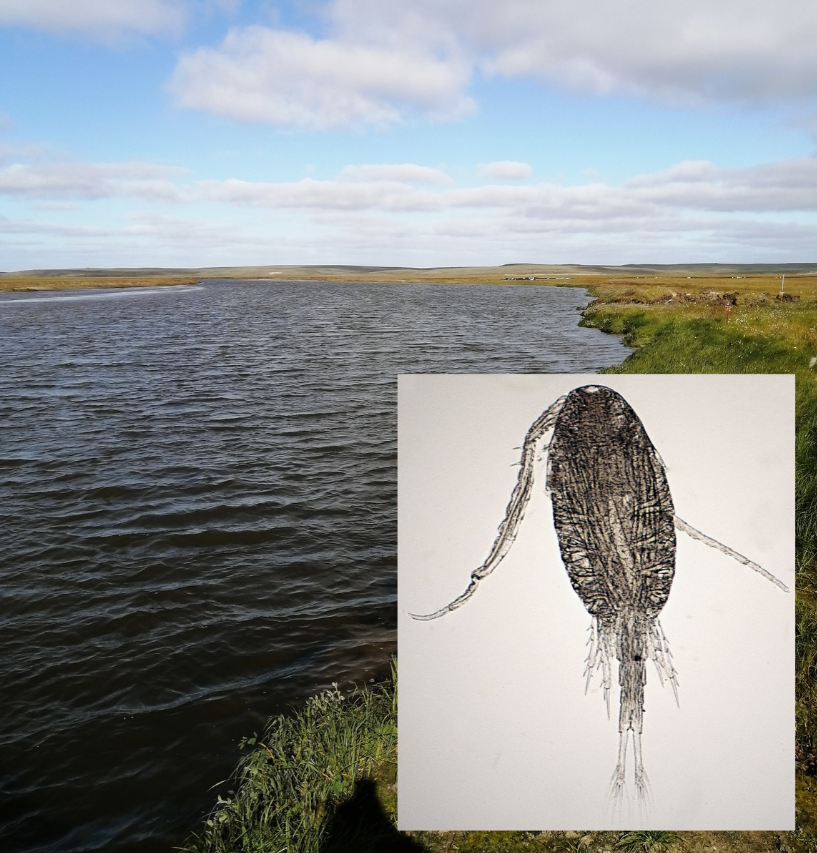
Photo: P.G. Garibyan, E.S. Chertoprud
Research on invasive species inhabiting aquatic ecosystems has been a hot topic already in the second half of the 20th century. Today, the number of invasive aquatic species has exceeded several dozen, and news sources are full of reports that one or the other species has been observed outside its natural habitats. The active expansion of certain species of aquatic organisms is associated both with the transformation of natural ecosystems in connection with global climate changes, and with anthropogenic activities, during which the artificial spread of species occurs along with agricultural crops, soils or ballast waters of ships. Attention of scientists from the Zoological Institute of the Russian Academy of Sciences and the A.N. Severtsov Institute of Ecology and Evolution RAS was attracted by the invasive species of copepod Eurytemora velox, noted in the Gulf of Ob only in the second decade of the 21st century. This crustacean is characteristic of the Ponto-Caspian region, the Baltic Sea and the basins of rivers flowing into it, as well as Western Europe. To estimate the rate and route of distribution of the species, scientists conducted a genetic analysis of Eurytemora individuals from populations inhabiting water bodies of Ukraine, Belarus and Russia, including crustaceans found in Siberia. The results showed that the scenario for the spread of the traveler crustacean is not as clear-cut as it seemed at first glance.
Individuals from the studied populations of the Urals and Siberia are genetically significantly different from European ones, although they are morphologically close to them. Two genetic lines have been identified - European and Siberian, the divergence of which occurred approximately in the Middle Pleistocene. Thus, E. velox spread over territories stretching from the Caspian Sea to the Gulf of Ob in the era contemporary with mammoths and apparently without human help. Such large-scale dispersals of species that occurred in ancient times (for example, in the Pleistocene or earlier) are called paleoinvasions.
However, exactly how the species spread is not yet clear. On the one hand, it is possible that E. velox penetrated to the Arctic coast of Siberia from the south along water corridors from the lower Urals, or was transported there on the plumage of shorebirds. On the other hand, it cannot be ruled out that the brackish-water bays of Western Siberia are the initial habitat of the crustacean, from where it, on the contrary, spread to the south. In addition, there is a possibility that the range of E. velox, previously covering all compared regions, was fragmented into northern and southern parts by the last glaciation. All these hypotheses require further testing using molecular genetic methods.
The completed studies complement the understanding of the composition of invasive species in the Russian Arctic. It is obvious that the crustacean Eurytemora velox, discovered in the Gulf of Ob, has been living there for a long time and the idea of this species as a recent invader to the Arctic is erroneous. This fact must be taken into account when assessing anthropogenic load and drawing up monitoring programs for Arctic waters.
The research was supported by the Russian Science Foundation grant No. 22-14-00258
Sukhikh N., Garibian P., Chertoprud E. Resettlement of Eurytemora velox (Crustacea: Copepoda) in Europe, the Urals and Western Siberia // Diversity. 2024. Vol. 16 (1): 47. https://doi.org/10.3390/d16010047. Q1
